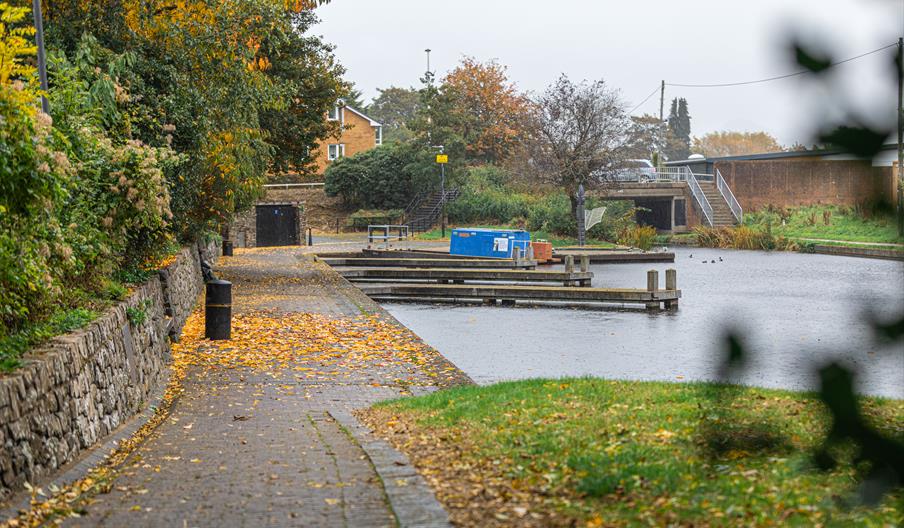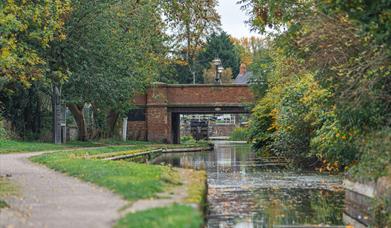Book Tickets Online
About
The Montgomery Canal, or ‘The Monty’ as it’s fondly referred to, stretches from Newtown to Llanymynech in Wales and continues over the border into England to Frankton Locks where it joins the Llangollen Canal. While not all of it is navigable by vessel the towpath is an open natural environment ready to enjoy and explore.
Walking or cycling along the towpath is an excellent way to experience the peace and tranquility of this rural canal. The canal towpath has recently been resurfaced between Newtown and Welshpool and work continues to the border at Llanymynech.
This is also a popular canal for canoeing – paddling quietly through peaceful green surroundings is a great way to spot wildlife.
The canal is home to 126 listed structures including the Llanymynech limeworks which includes the rare restored Hoffman Kiln and Chimney, both features of a forgotten industrial past that included quarries, limekilns and woollen industries.
Two sections of the canal are currently open to navigation. The canal has been restored from its northern end - the junction with the Llangollen Canal at Welsh Frankton - south through Frankton and Aston Locks. There are then extensive dry sections and some road blockages around Llanymynech and Pant. Continuing south, Carreghofa Locks have been restored but are currently a short isolated length.
The canal is then navigable for an 11-mile section around the town of Welshpool. The southernmost few miles to Newtown, have many obstacles to restoration but local enthusiasm has given new impetus to the proposals to restore this final section.
GREEN FLAG RECOGNITION
The canal is a true haven for wildlife and tranquility with many Sites of Special Scientific Interest along the way and the canal offers many opportunities for the walker or fisherman. An 8 mile section of the canal has been awarded Green Flag status which recognises spaces that boast the highest possible environmental standards, are beautifully maintained, and play an important role in the local community.
HISTORY OF THE MONTGOMERY CANAL
The Montgomery Canal was built primarily for agricultural use, to secure cheap and dependable transport of heavy goods for landowners on or near the canal and to avoid road tolls.
Carreghofa marks the original junction between what was then the Montgomeryshire Canal and the Llanymynech Branch of the Ellesmere Canal and the curious feeder arrangements from the River Tanat are indicative of the jealous emphasis on water supply.
Terminating for a while at Garthmyl its continuation to Newtown was delayed by the Napoleonic Wars and it was left to a separate company to complete the Western Branch, or Newtown Extension, which opened in 1821. Completion of the Eastern Branch of the Montgomery, which was to connect with the Severn at Shrewsbury, failed to materialise.
Limestone was moved from the quarries at Llanymynch to limekilns on the bank side. In 1840 there were 92 limekilns along the canal. Kilns can be seen at several locations including Buttington, north of Welshpool. Lime produced could be used for building and for treating the fields.
The Montgomery Canal also provided the power for eight watermills using the feeder systems on and off the canal. These were at Aberbechan, Berriew, 3 near or in Welshpool, Domen, Wern and Carreghofa.
Competition from the railways led to a decline in trade and when the Montgomery breached its banks near Perry in 1936, isolating it from the rest of the system, the cost of repairs vastly exceeded the annual revenue and it was abandoned. Legal abandonment followed in 1944. The line from Llangollen to Hurleston become known as the main line of the Llangollen Canal, with the derelict Montgomery perceived as merely a spur off it at Welsh Frankton.
In the 1960s plans to build a superhighway on the bed led to the 'Big Dig' targeted restoration event at Welshpool and the focus of efforts to reclaim the waterway. The Montgomery Canal, once hopelessly lost, is being restored and in excess of half of the line has been reinstated in various sections with a view to eventual full restoration.
Book Tickets
Facilities
Children
- Children welcome
Parking
- Free Parking
Map & Directions
Road Directions
The Canal Wharf is located close to Welshpool town centre.
Accessible by Public Transport: Welshpool station is 0 miles away.




 to add an item to your Itinerary basket.
to add an item to your Itinerary basket.








